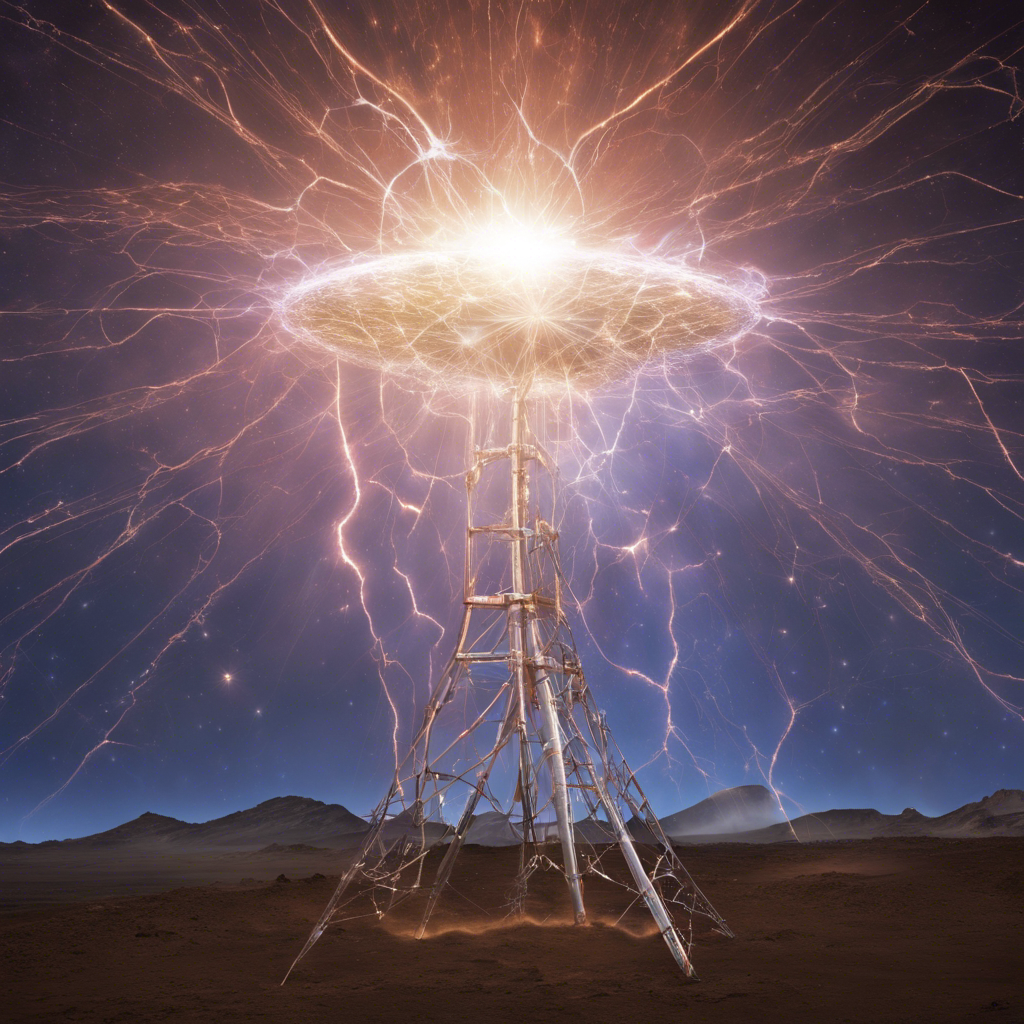Scientists Detect Most Powerful Cosmic Ray in Decades, Origin Remains a Mystery

The discovery of an ultra-energetic cosmic ray raises questions about its source and the need for new physics to explain its origin.
Scientists have recently detected the most powerful cosmic ray in over three decades, sparking curiosity and debate within the scientific community. The turbocharged particle from outer space, with an estimated energy of 240 exa-electronvolts (EeV), has left researchers puzzled as they attempt to determine its origin. While some speculate that the particle could be the result of unknown physics, others suggest that current models of cosmic ray behavior may need adjustment. This discovery has reignited interest in the study of cosmic rays and their potential to uncover new insights into the universe.
The Power of Cosmic Rays:
Cosmic rays are high-energy subatomic particles, often protons, that travel through space at near-light speeds. Ultrahigh-energy cosmic rays, which exceed one EeV in energy, are particularly fascinating due to their immense power. To put their energy levels into perspective, they surpass the capabilities of even the most advanced human-made particle accelerators by a factor of one million. Cosmic rays with energies exceeding 100 EeV are incredibly rare, with only one such particle reaching each square kilometer of Earth’s surface every century.
The Discovery of Amaterasu:
On May 27, 2021, Toshihiro Fujii, an astronomer at Osaka Metropolitan University, stumbled upon unusual signals while conducting a routine data check at the Telescope Array in Utah. These signals indicated that the detectors had been struck by an extraordinarily energetic particle. Initially skeptical, Fujii suspected a software error but soon realized the significance of his findings. The measurements aligned with those of ultrahigh-energy cosmic rays, leading the team to nickname the particle “Amaterasu” after the Japanese Sun goddess.
The Mystery Deepens:
Despite the excitement surrounding the discovery, attempts to determine the source of the energetic spike have proven fruitless. Typically, ultrahigh-energy cosmic rays travel through space relatively smoothly, as they are less affected by magnetic fields compared to lower-energy cosmic rays. This characteristic allows scientists to trace their origins back to stellar explosions, black holes, or galaxies. However, Fujii and his team found that Amaterasu originated from a region with few galaxies, complicating the search for its source.
Possible Explanations:
One possible explanation for the challenge in pinpointing the source of Amaterasu is that current models estimating the influence of magnetic fields on cosmic rays may require adjustment. If this is the case, the particle might have come from a slightly different direction than initially calculated. Clancy James, an astronomer at Curtin University, suggests that the estimates may be incorrect, highlighting the need for further investigation.
Another intriguing possibility is that ultrahigh-energy cosmic rays are produced by unknown physical processes, enabling them to travel much greater distances than previously thought. Jose Bellido Caceres, an astroparticle physicist at the University of Adelaide, suggests that this discovery could be an opportunity to explore new physics. Cosmic rays offer a unique testing ground for studying particle interactions at extreme energies that cannot be replicated in Earth-based accelerators.
The Path Forward:
To shed more light on the origin of ultrahigh-energy cosmic rays, Fujii and his team are upgrading the Telescope Array to enhance its sensitivity fourfold. This upgrade will enable researchers to capture more of these rare particles and trace their origins with greater precision. By expanding our understanding of cosmic rays, scientists hope to unravel the mysteries of the universe and potentially discover new physics.
Conclusion:
The recent detection of an ultra-energetic cosmic ray has sparked excitement and intrigue within the scientific community. The mystery surrounding its origin has led researchers to consider the possibility of unknown physics or the need to refine current models. As scientists continue to study cosmic rays and upgrade their detection capabilities, they hope to uncover more about these powerful particles and gain deeper insights into the workings of the universe. The discovery of Amaterasu serves as a reminder of the vastness of the cosmos and the limitless potential for scientific exploration.










